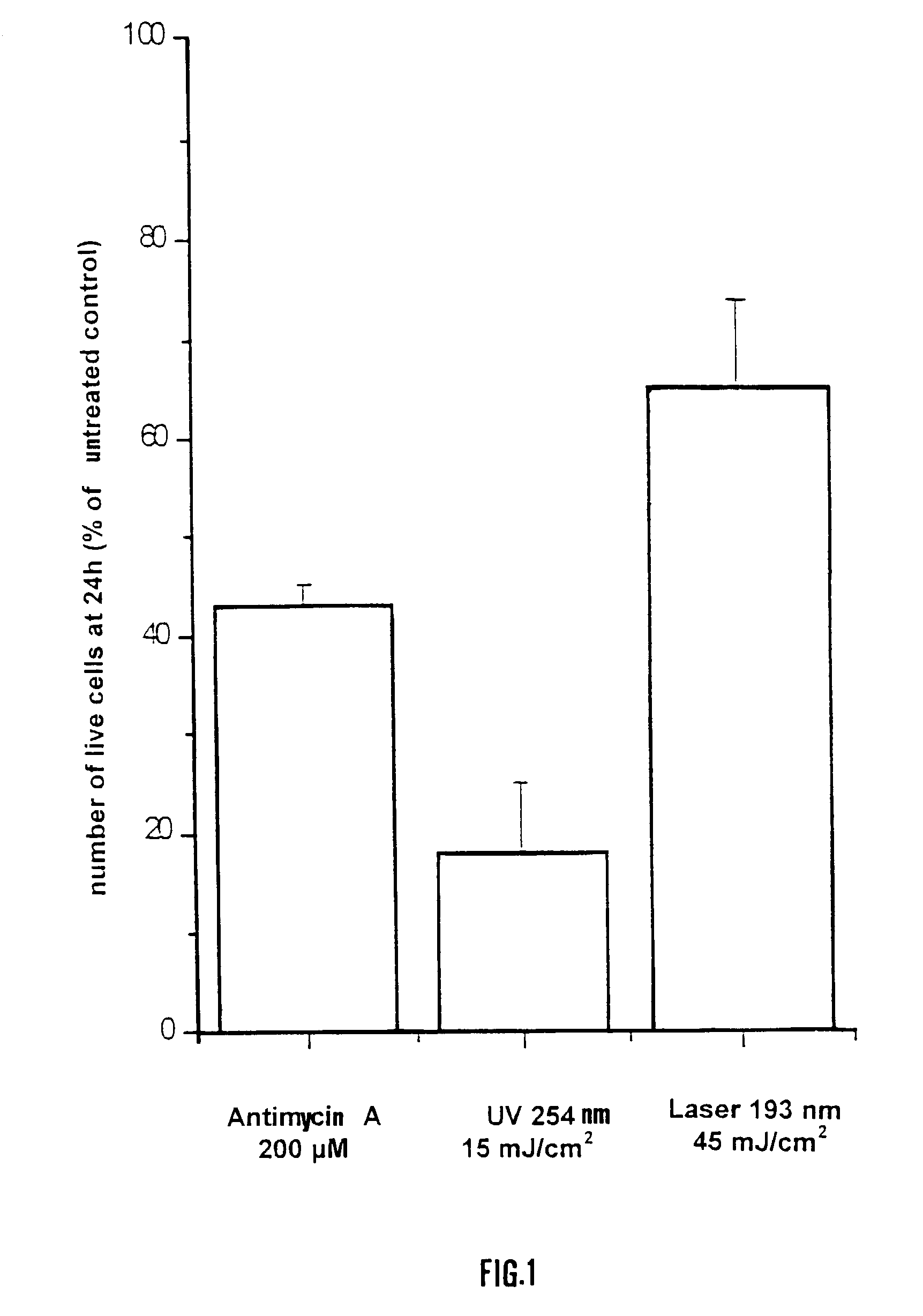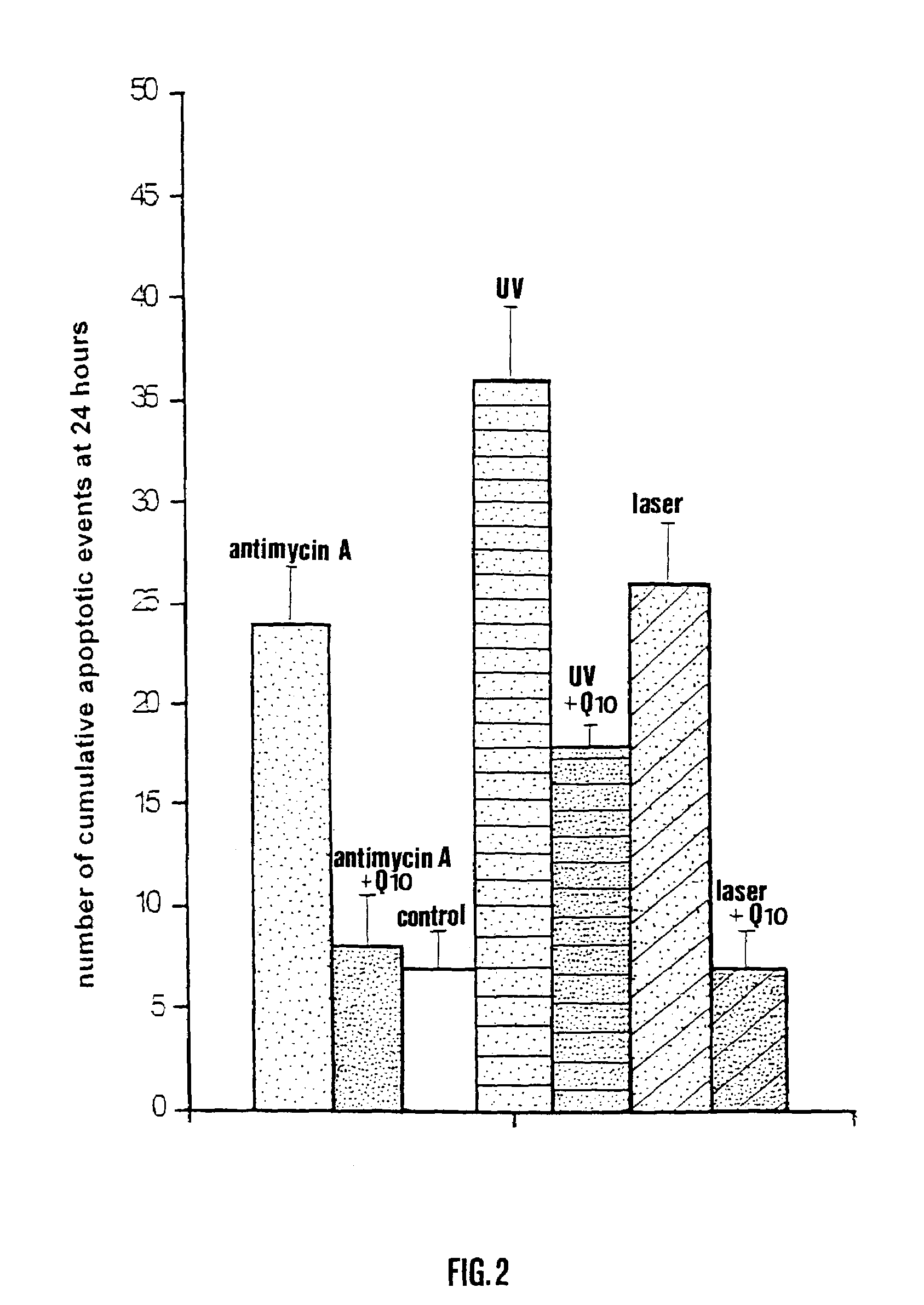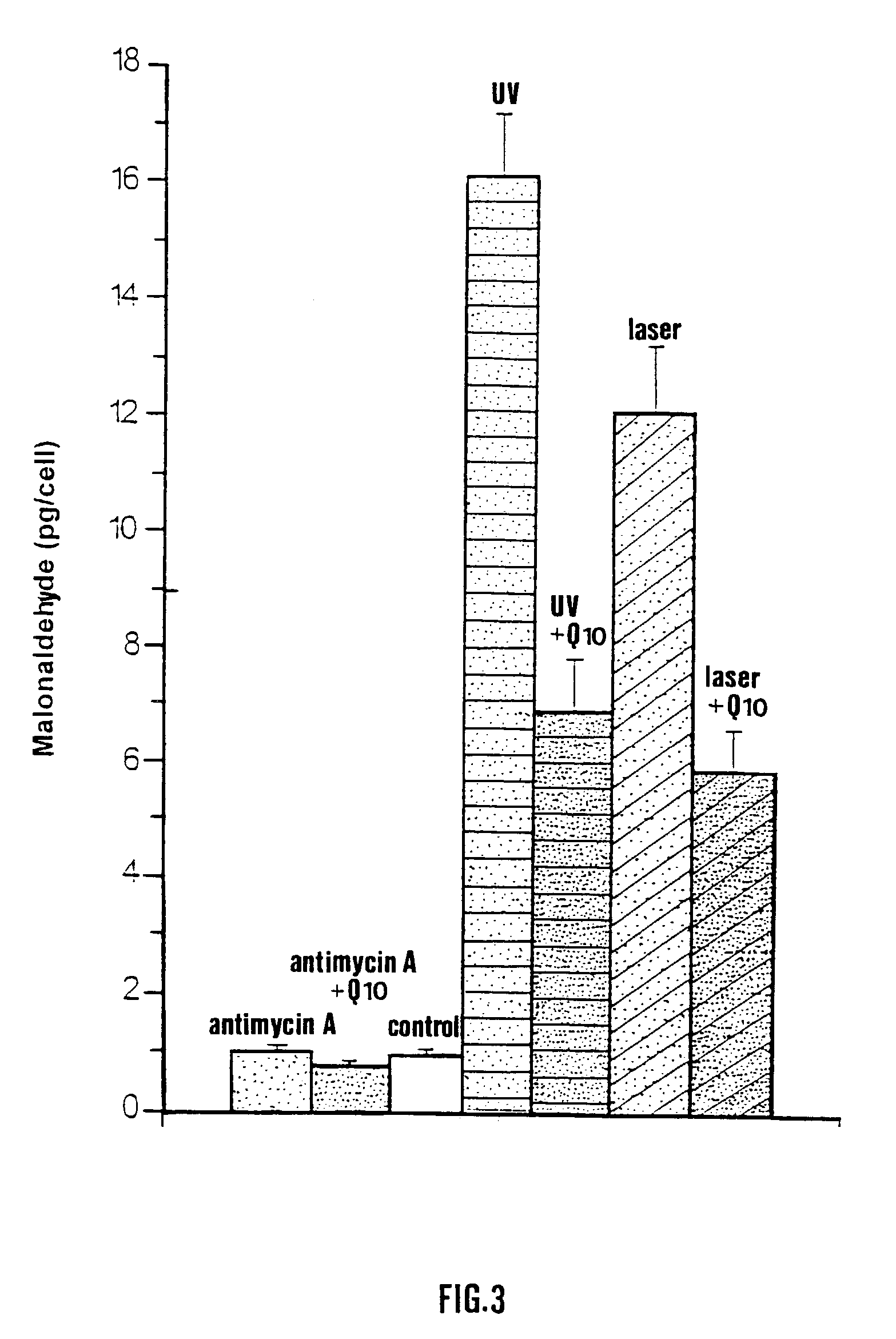Use of quinone Q10 for the treatment of ocular diseases
- Summary
- Abstract
- Description
- Claims
- Application Information
AI Technical Summary
Benefits of technology
Problems solved by technology
Method used
Image
Examples
experimental results and examples
[0090]In the present examples, the Antimycin A, C2 Ceramide and serum starvation are used to demonstrate the anti-apoptotic effect of Coenzyme Q10 in anti apoptotic events not related to an excess of free radicals. The choice of said substances is due to their mechanism of action.
[0091]1) Antimycin A is an organic poison which blocks the cellular respiration, therefore the cellular capability of producing energy, by binding the complex III of the mitochondrial respiratory chain. As a consequence of this, also if inside the cell there is oxygen available, the mitochondrion does not succeed in utilizing it and, therefore, stops forming ATP through oxidative phosphorilations. The phenomenon is indicated as chemical (or also histotoxical) hypoxia, that is, the impossibility of using oxygen due to the poisoning of the respiratory chain; said hypoxia is associated to other kinds of hypoxia (hypoxic, anaemic and ischemic) which are due to the lack of actually used oxygen in the cellular en...
example 1
Protective Effect of Coenzyme Q10 Against the Hystotoxic Hypoxia Effect
[0098]RCE cells were plated in thirty dishes the day before the administration of the apoptotic stimulus at the density of 2×106 / Petri dish with 100-mm diameter. The day after, two series of 10 dishes each, were treated with antimycin A 200 μM and 254-nm UVC 15 J / m2, respectively, whereas the third series was left untreated. After 24 hours the living cells were counted with the trypan blue method and shown on graph as control percentage (FIG. 1).
[0099]RCE cells were plated the day before the administration of the apoptotic stimulus at the density of 2×106 / Petri dish with 100-mm diameter. The day after antimycin A at the concentration of 200 μM in combination with Coenzyme Q10, 10 μM in Lutrol F127™ 0.04% or with only Lutrol F127™ 0.04% was added to one dish. From now on “treated with Coenzyme Q10” refers to Coenzyme Q10 vehiculated with Lutrol F127™ 0.04%, whereas the control is always meant as treated with Lutro...
example 2
Indirect Evaluation of the Production of Free Radicals Following Treatment with Antimycin A and 254-nm UVC by Measuring the Levels of Malondialdehyde and of the Efficiency of Coenzyme Q10 in Preventing Said Production
[0100]The malondialdehyde is a product of lipid peroxidation, which occurs following exposure of polyunsaturated fatty acids to free radicals. The production of malondialdehyde is then routinely assumed as production index of the radicals themselves by treatments with electromagnetic radiations or oxidant substances.
[0101]Coenzyme Q10, as antioxidant, decreases the malondialdehyde production by indicating an action thereof, which inhibits the free radicals formation.
[0102]In order to perform the malondialdehyde assay, RCE cells were plated at the density of 5×105 cells / dish in 20 Petri dishes with 100-mm diameter and incubated overnight in 5% CO2 atmosphere, 37° C. Subsequently, the dishes were preincubated for 2 hours with Coenzyme Q10 (10 dishes), or left untreated (1...
PUM
| Property | Measurement | Unit |
|---|---|---|
| Fraction | aaaaa | aaaaa |
| Mass | aaaaa | aaaaa |
| Mass | aaaaa | aaaaa |
Abstract
Description
Claims
Application Information
 Login to View More
Login to View More - R&D Engineer
- R&D Manager
- IP Professional
- Industry Leading Data Capabilities
- Powerful AI technology
- Patent DNA Extraction
Browse by: Latest US Patents, China's latest patents, Technical Efficacy Thesaurus, Application Domain, Technology Topic, Popular Technical Reports.
© 2024 PatSnap. All rights reserved.Legal|Privacy policy|Modern Slavery Act Transparency Statement|Sitemap|About US| Contact US: help@patsnap.com










